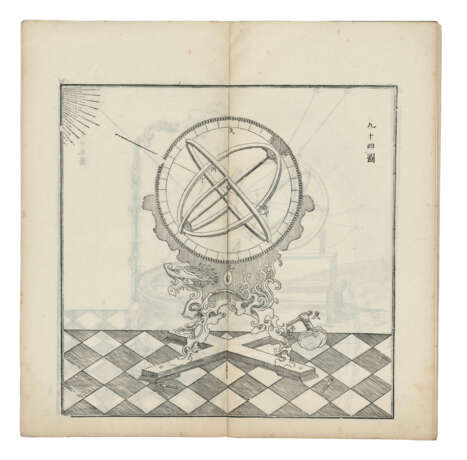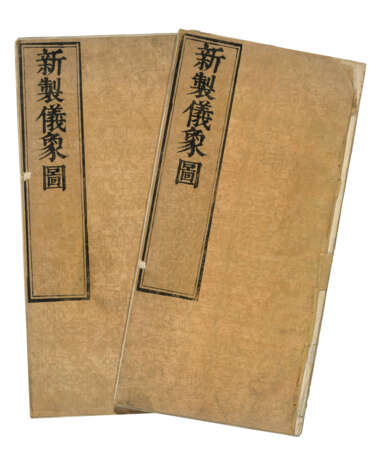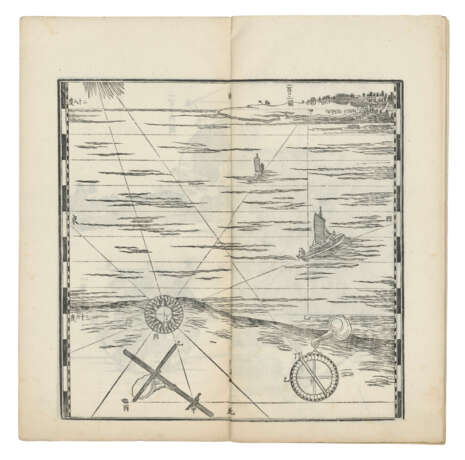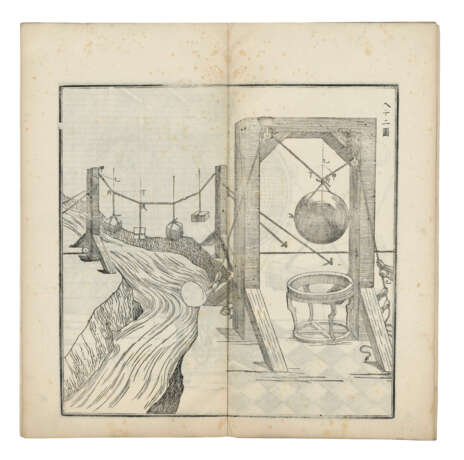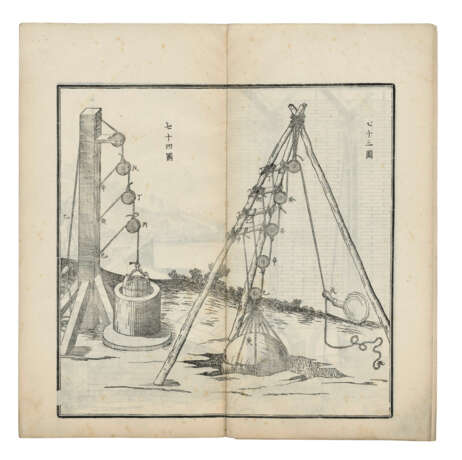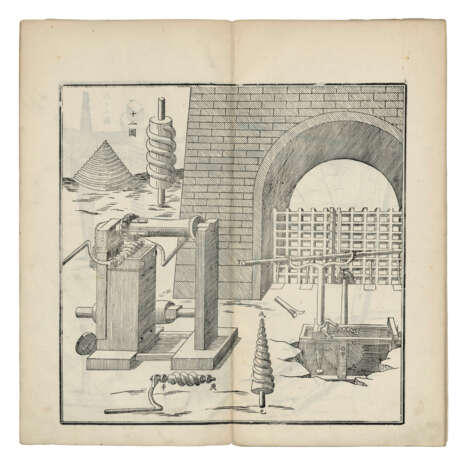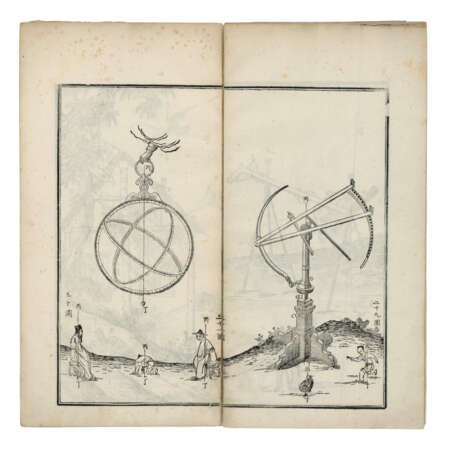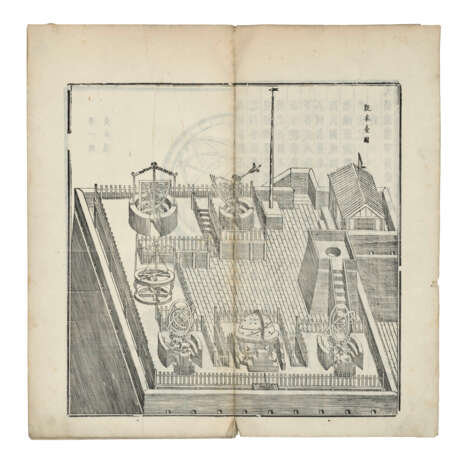ID 1105688
Lot 50 | VERBIEST, Ferdinand (1623-88)
Valeur estimée
£ 250 000 – 350 000
[Liber Organicus Astronomiae Europaeae apud Sinas restituate – Ling-t’ai I-hsiang t’u or Hsin-chih I-hsiang t’u. [Beijing: Board of Astronomy, 1674].
First edition of a rare astronomical work depicting the observatory and scientific instruments designed for the Chinese Emperor. Verbiest was a Flemish Jesuit mathematician and astronomer at the court of the Kangxi Emperor. Having been called to Bejing to join Johann Adam Schall von Bell in 1660, Verbiest survived turmoil and suspicion at the court, eventually earning the trust of the young Kangxi Emperor through his scientific demonstration of errors in the Chinese calendar. He was appointed tutor to the Emperor, Director of the Beijing Imperial Observatory and head of the Mathematical Tribunal. In 1673 he rebuilt the Observatory and had 6 new large instruments built (a quadrant, azimuth compass, sextant, celestial globe, and two armillary spheres) modelled on those of Tycho Brahe, in his Astronomiae Instauratae Mechanica of 1598. The first plate depicts the observatory complex. Other plates not only depict instruments but show their manufacture and application; alignment and adjustment of their flat and curved surfaces; details of the gearing and screws used to adjust the instruments; the civil engineering machinery and processes used in building the instrument mountings and the great observatory tower itself. Other woodcuts depict navigational instruments such as the compass and cross-staff, and their use; astronomical principles; and mechanical powers, such as those of the inclined plane, lever, screw, pulley, winches, etc.
‘…the Verbiest instruments represent a curious cultural confluence, as the European circles and technical parts were mounted upon stands contrived in the form of lions, dragons, flaming pearls, and other oriental motifs. The technology is wholly European, while the decorative features are characteristically Chinese . . . . In Le Comte’s view, the Peking instruments were the finest pieces of their kind to be found anywhere in the world’ (Chapman pp. 418-24).
RBH lists only a single copy selling at auction (1968, the Kenney copy); Golvers census lists over 45 copies, many incomplete, and all but about two in institutions. A much shorter compendium was produced in Latin for the European market in the same year. Chapman, Allan, ‘Tycho Brahe in China: the Jesuit Mission in Peking and the Iconography of European Instrument-making Processes’: in Annals of Science, Vol. 41 (1984), pp. 417-43–(giving a detailed technical exposition of the illustrations in this work); Cordier, Sinica, 1451; Golvers, Ferdinand Verbiest, S.J. (1623-1688) and the Chinese Heaven, no. LO 12 in his census; Sommervogel VIII, 575; Golvers, The Astronomia Europaea of Ferdinand Verbiest, S. J. (Dillingen, 1687): text, translation, notes and commentaries, Nettetal, 1993; Isaia Iannoccone, ‘Syncretism between European and Chinese culture in the astronomical instruments of Ferdinand Verbiest in the old Beijing observatory’, in J. W. Witek, ed., Ferdinand Verbiest (1623-1688) Jesuit missionary, scientist, engineer and diplomat, Nettetal, 1994, pp. 93-121.
2 volumes, folio (395 x 199mm). 106 double-page woodcuts (the first opening is the Chinese Preface, the remaining 105 openings are woodcut illus. within frames), printed on thin white Chinese paper (occasional faint spotting, tiny hole at extreme gutter of a few plates, vol. 1 split, short neat tear in one leaf). Original golden-yellow silk over paper wrappers, woodcut Chinese title-labels on upper covers as issued (spines perished, a little fraying, small stain on one cover); modern citron morocco chemise and folding box by Renaud Vernier, 1995.
| Adresse de l'enchère |
CHRISTIE'S 8 King Street, St. James's SW1Y 6QT London Royaume-Uni | ||||
|---|---|---|---|---|---|
| Aperçu |
| ||||
| Téléphone | +44 (0)20 7839 9060 | ||||
| Commission | see on Website | ||||
| Conditions d'utilisation | Conditions d'utilisation |
